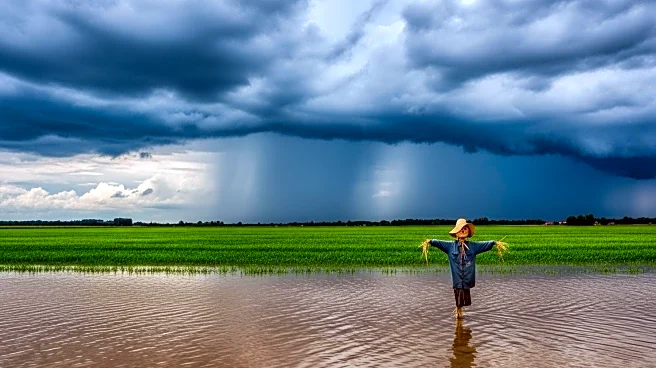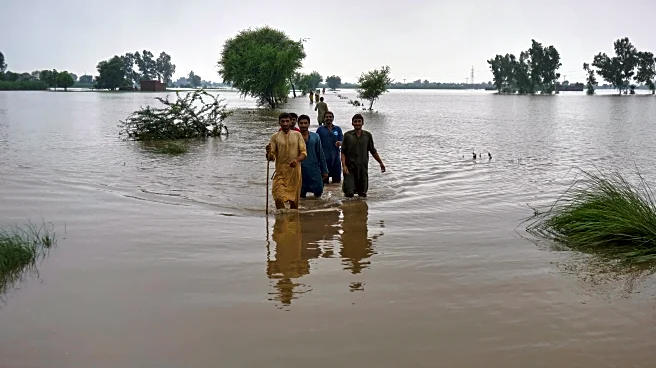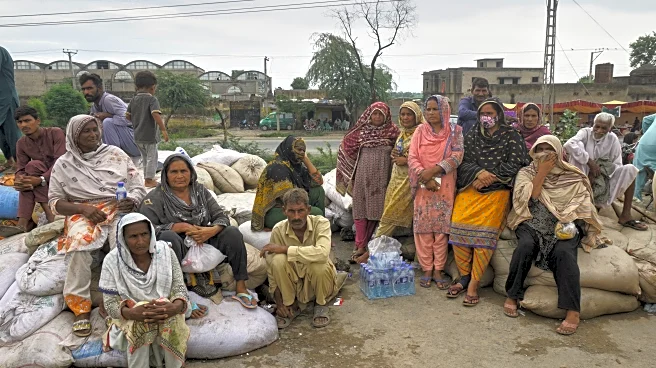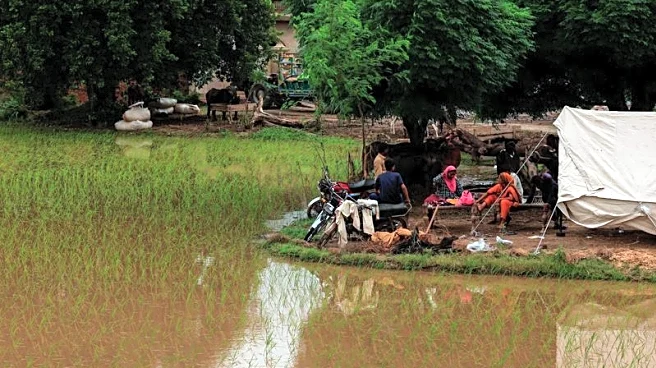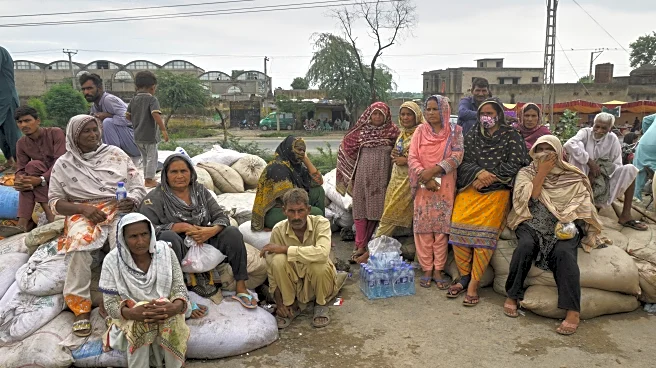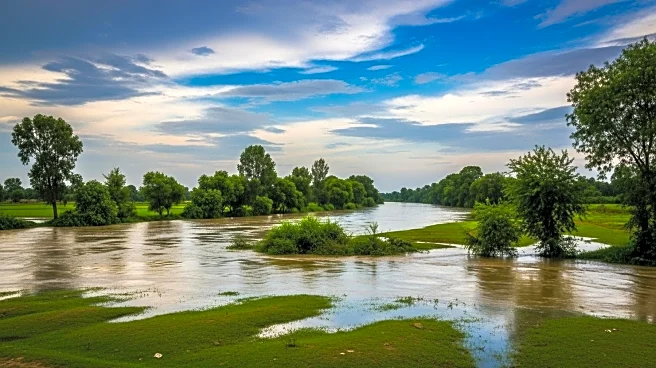What is the story about?
What's Happening?
Recent floods have severely impacted agricultural lands across central Punjab, displacing hundreds of thousands of smallholder farmers and destroying crops. The floodwaters have swept away rice, maize, and other crops in over 2,100 villages along the Sutlej, Ravi, and Chenab rivers. The situation is expected to worsen as the waters move southward, threatening further damage to croplands in Punjab's cotton-producing districts before reaching Sindh. The destruction of crops and disruption of food supply chains are anticipated to lead to spiraling food inflation, reminiscent of the 2022 floods. The economic upheaval is significant, with initial reports indicating farmers' losses in billions.
Why It's Important?
The floods have profound implications for Pakistan's economy and society. The agricultural sector, which constitutes nearly a quarter of the economy and employs about 40% of the labor force, is crucial for GDP growth. The devastation of crops and livestock threatens to push more people below the poverty line, particularly affecting low-income rural and urban households. The increase in food prices will disproportionately impact these groups. Additionally, the floods are likely to exacerbate the balance-of-payments situation by increasing the import bill due to domestic food shortages and reducing exports due to production losses in rice and cotton.
What's Next?
The ongoing floods highlight the urgent need for improved national preparedness and investment in agricultural resilience. Without significant changes, future flood events will continue to devastate livelihoods and hinder economic growth. The government may need to consider radical overhauls in disaster preparedness strategies to mitigate the recurring economic shocks caused by such natural disasters.
Beyond the Headlines
The floods underscore the intensifying impact of climate change on natural disasters, with Pakistan experiencing nearly 20 major flood events since 1950, half of which occurred in the last two decades. This trend suggests that floods are becoming more frequent and severe, necessitating a reevaluation of national strategies to address these challenges effectively.
AI Generated Content
Do you find this article useful?
